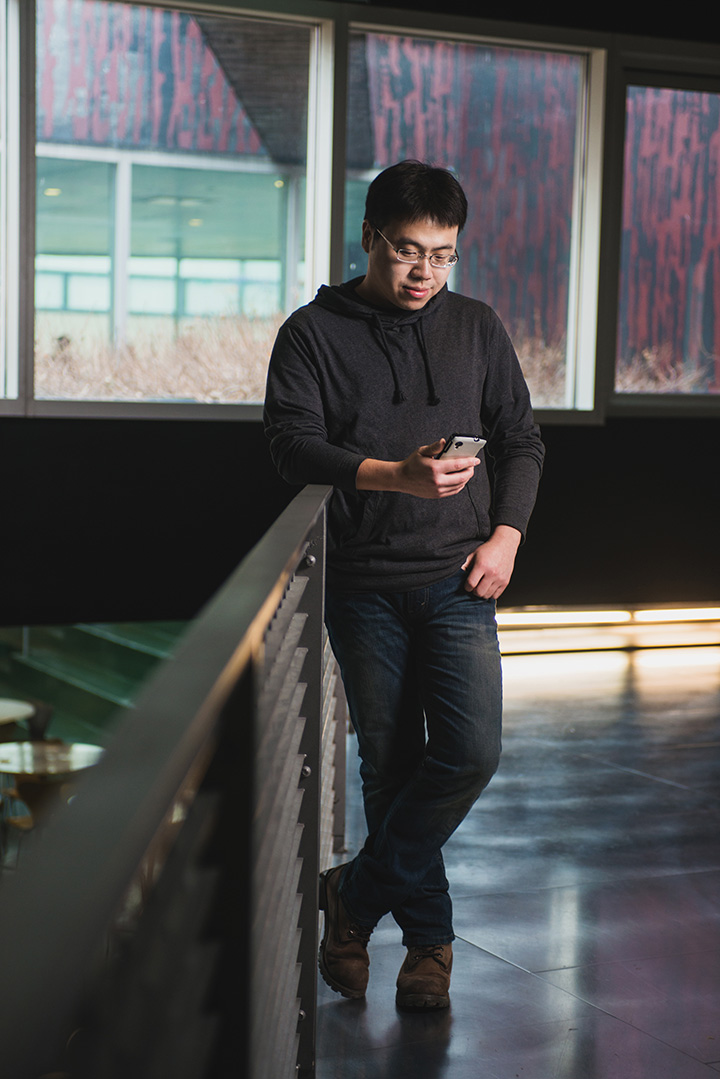Communications Technology - Tomorrow
According to Consumer Reports, 3.1 million cell phones were stolen in the United States in 2013.

Photo: Bonnie Robinson
When phones are stolen, often more than just the device is compromised; personal identities, private information, and pride of the owner are also at risk (just ask insert-name-of-shamed-celebrity-here).
Sure, we can activate numerically coded screen locks, but locks offer only one layer of protection-and as any thief will attest, locks were meant to be broken. What’s more, locking functions may not activate before a thief gains access. And it doesn’t need to be a thief. Even if we willingly lend our phone to, say, a friend who needs to make a call, we may not want our friend to have access to our online-banking apps or those embarrassing photos on Facebook.
IIT computer science doctoral student Cheng Bo is developing a new method of protection that uses equipment already built into smart phones in a different way to add a new layer of protection-through biometrics that allow cell phones to identify their owners by the way users touch or tap a screen.
Bo has written a machine-learning algorithm, dubbed SilentSense, that teaches existing phones to recognize their users’ phone-handling patterns-from their grips and pressure of contact to finger size and the angles at which they hold their phones. His software works alongside the accelerometers and motion sensors already in cell phones, enabling phones to recognize owners with 99 percent accuracy. If the phone doesn’t know its user, it locks itself entirely.
Bo explains that SilentSense teaches phones to identify owners based on two patterns of use. “The first is how you hold and touch the phone. There is a correlation between the location that you press and the vibration [in relationship to the location of the motion sensor]. The second is when you touch the phone the device reacts. We can capture that reaction. Then we link the two together to teach the machine how to learn,” Bo says.
“You, only you, can make the phone act like that,” he adds. “Even if someone knows how you hold or touch a phone, they cannot know the strength of your touch.”
Bo says that the newest security options on some phones allow owners to deactivate certain apps so that other users who may borrow the phones cannot access these apps. But unlike SilentSense, which knows automatically how to recognize another user, these newer options require the owner to perform an additional manual selection.
Bo presented his project at the mobile computing and networking conference ACM MobiCom 2013 in Miami and plans to do additional work to make SilentSense even more accurate. In the meantime, he continues to field calls from companies, especially security companies, about how to implement SilentSense into their own products. He is currently working on new software that can override built-in GPS systems in smart phones to more accurately identify locations within critical regions-such as metropolises, where GPS can have poor accuracy-as well as on software that will lock or silence a cell phone if the user is driving.